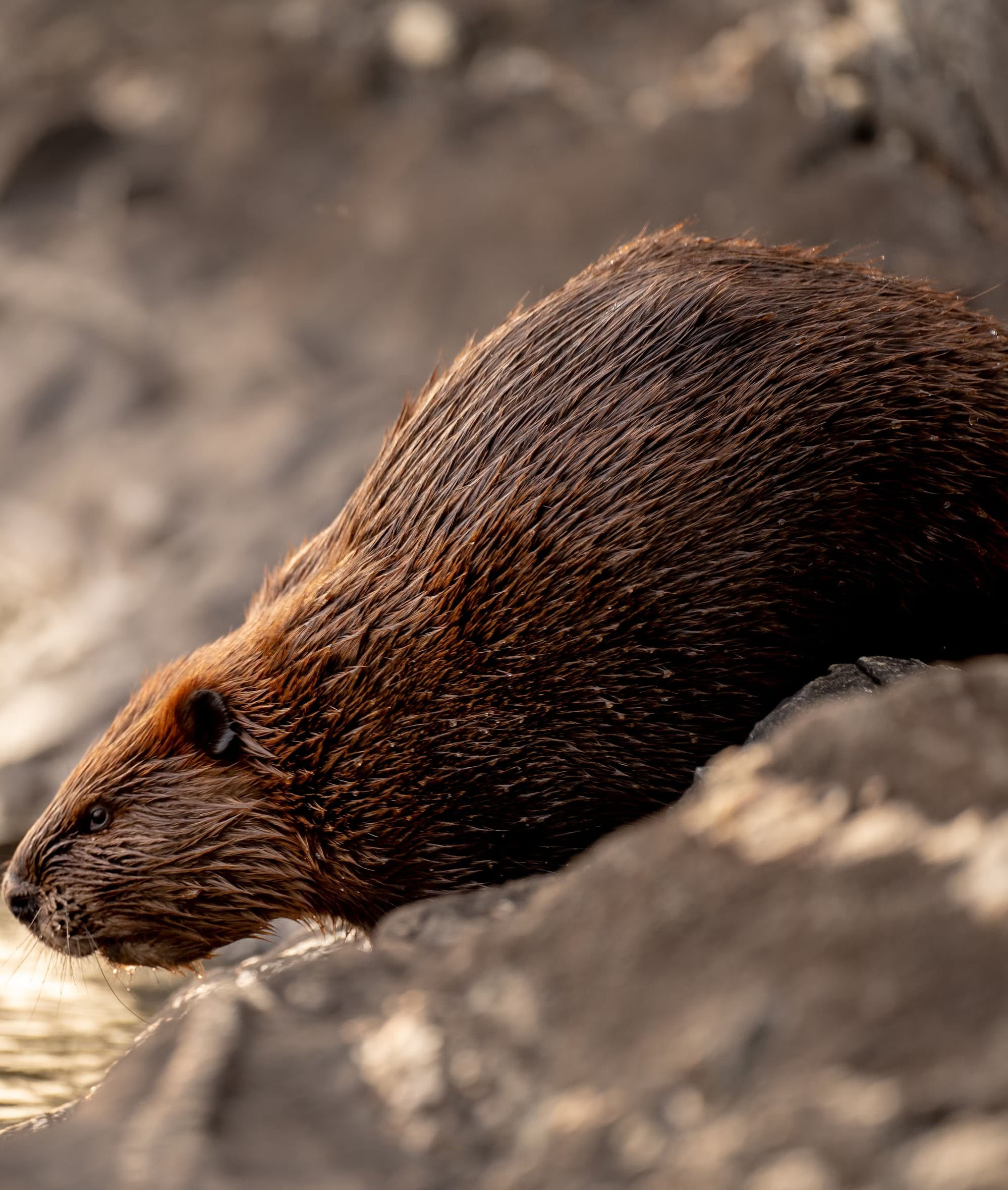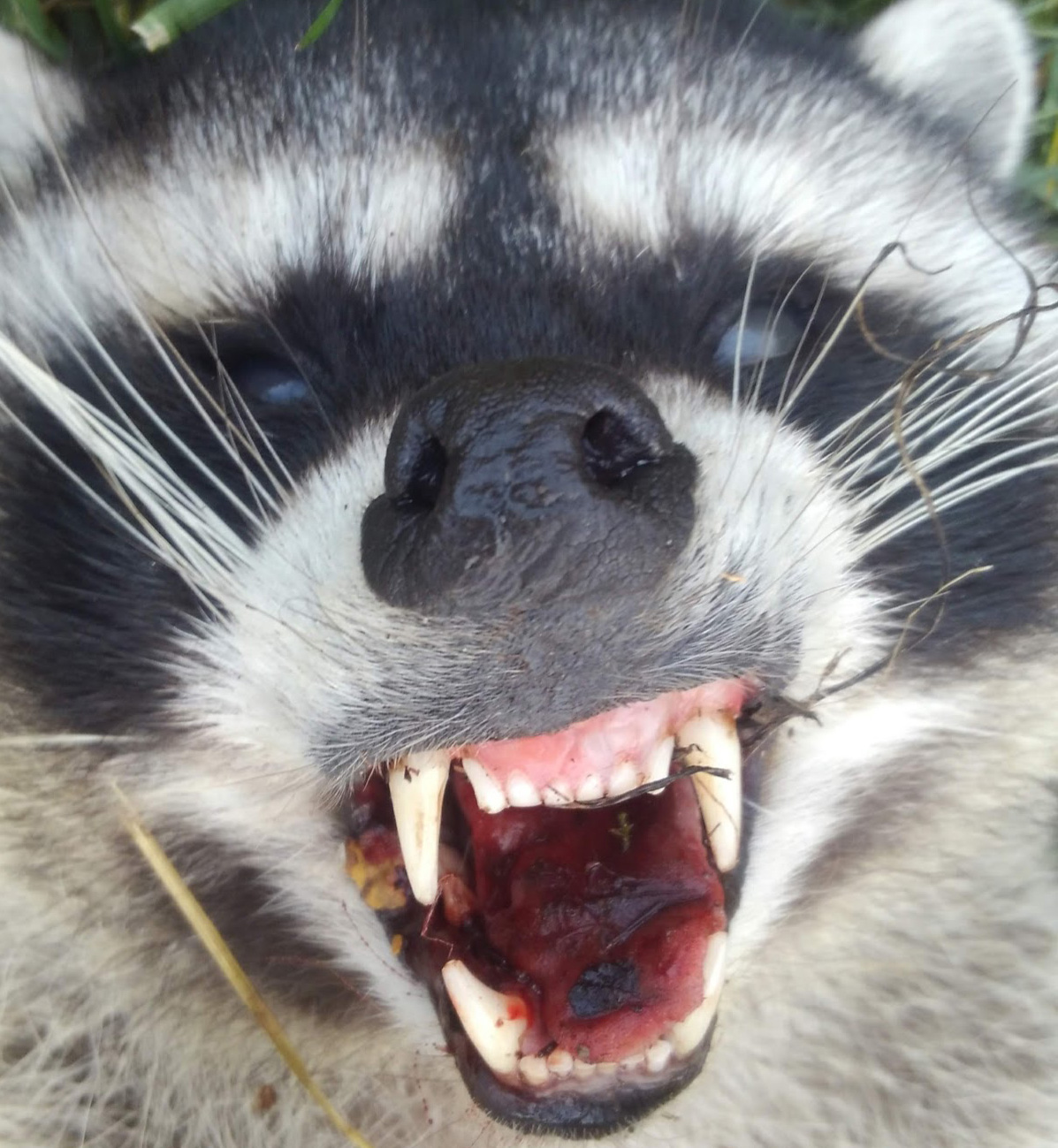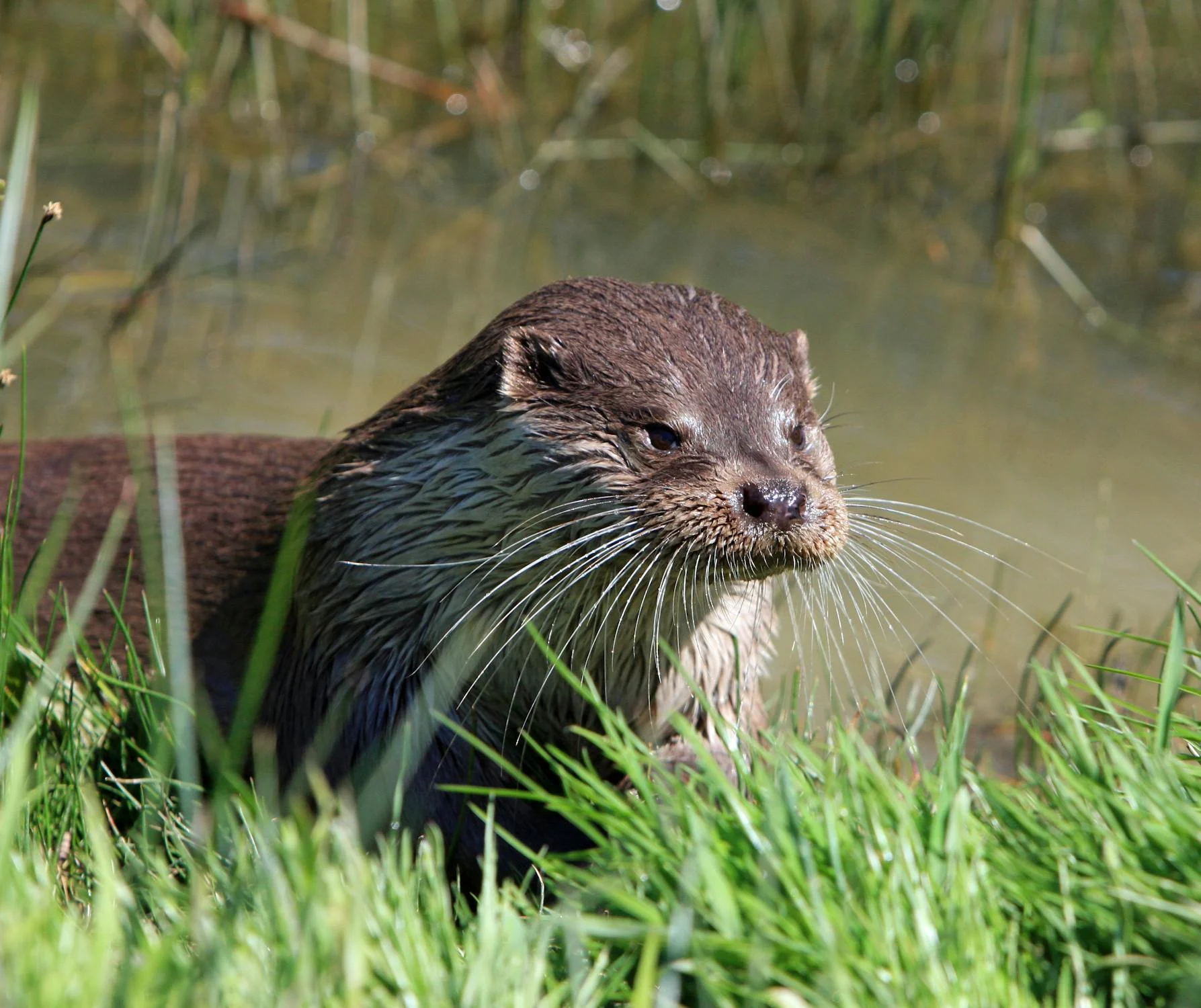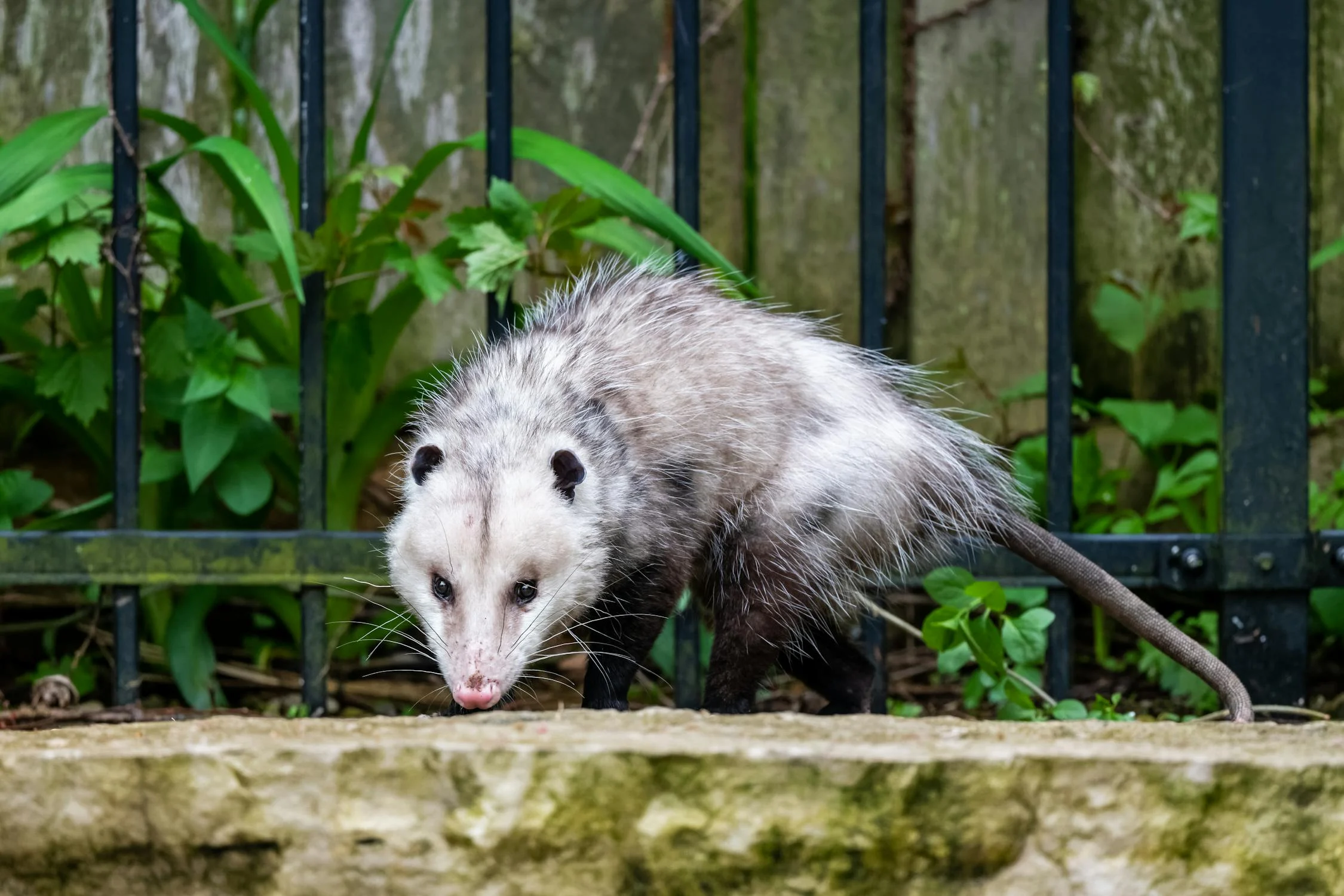Frequently Asked Questions
Frequently Asked Questions And Information About Wildlife Control
Whether you're dealing with raccoons, skunks, or other common pests around the Willamette Valley, we're here to provide answers to help you understand how to manage and mitigate wildlife-related issues effectively.
Explore our FAQs to gain insights into the behaviors, habitats, and control methods for various wildlife species prevalent in Oregon's Willamette Valley.

Skunks
The risk of skunk spray is high without professional help. Animal Control NW utilizes careful strategies to remove skunks without causing stress to the animal or unpleasant odors for you.
To ensure the safety and comfort of both the skunks and our clients, Animal Control NW conducts assessments to determine the most effective removal approach tailored to each situation. We are committed to using the least intrusive methods possible, focusing on long-term solutions that prevent future visits from these resourceful creatures. Our effective practices protect your land and well-being by keeping your environment free from disruption and odors.
Q: Where Do Skunks Live?
A: Naturally Skunks den under logs, brush piles and in abandoned holes. In your yard, they may take residence in an area like a wood or rock pile, under a deck/crawlspace, shed or porch with easy access. Humans have created a storm that allows skunks to thrive in about any neighborhood. They don't discriminate at all. They are semi-nomadic, they generally have a pattern of movement. Sometimes they'll be gone for several days on a walkabout. We've had customers with visible skunks on the day we set traps, after a few days there may be no results. Seemingly out of nowhere half a dozen are trapped at once and our job is nearing completion. This leads us to believe that skunks have patterns of movement and likely have multiple victims. Some animals are "under animals." This means that they like to go under everything. Under houses, under fences, etc. They aren't climbers so they will dig and go under at every opportunity.
Q: What Do Skunks Eat?
A: A skunk’s diet consists mainly of insects like grubs, worms, crickets and beetles. They’ll also eat small rodents and attack any type of bee's nests for their larvae. Unattended dog/cat food, garbage and other treats, skunks will eat about anything.
Q: Are Skunks Dangerous?
A: Skunks don’t want to be bothered. They are docile animals similar to a house cat. Most predators will only mess with a skunk once. So they pretty much have free reign. Their spray feels toxic. From experience we can say that a direct spray can be one of the worst and most memorable experiences of your life. Being involved in a fresh spray can induce violent vomiting, swelling of inner ears/nose/throat, eye irritation, headache and feeling nauseous for as many as 24 hours. Indirect exposure can cause the odor to enter into the body causing a skunk trapper to smell skunky even several days after exposure. Some people have said they can only spray a few times, this is not true. They're almost always able to muster up another shot even if they had been observed spraying a dozen or better times. Handling of skunks in cages is okay 99% of the time if you move slow. The other 1% will change anybody's opinion
Q: What Damage Can Skunks Cause?
A: Skunk damage to landowners varies from mild to severe. In Oregon shallow cone-shaped holes in lawns are the most common sign. It can appear that you had just hired somebody to aerate your lawn. Skunks will also dig up gardens and some flowers. They will make their way under any available structures. Occasionally they can damage them by ripping into insulation, chewing on wires, opening ductwork, waste cleanup can be nasty, not to mention getting rid of the odor.
Any of us who care about our yards in the Willamette Valley monitor our lawns, flowers, and gardens closely. An abundance of life is naturally present underground in healthy areas. We have wet ground year-round when our sprinklers are used during summer. Grubs and nightcrawlers come to the surface where skunks smell them and start digging. Ponds, gardens, and ripe fruit trees are great attractants for skunks.

Nutria
Known for their destructive grazing, nutria can severely impact local vegetation and waterways. Our team employs effective strategies to manage nutria populations, ensuring they do not harm the ecological balance of your area.
In the lush landscapes of the Pacific Northwest, nutria pose a significant challenge due to their intense grazing habits, which can degrade waterways and displace native species. At Animal Control NW, we prioritize ecological preservation by monitoring and managing nutria populations. Our approach ensures the stability of local environments, supporting the overall health and diversity of regional ecosystems.
Q: What Are Nutria?
A: Nutria, also known as river rats or nutra-rats in the south, are large invasive semi-aquatic rodents that look like a cross between a rat and a beaver. They reproduce quickly and are about as aggressive as raccoons, but not as fearful of human encounters. They will also snarl and growl like a gremlin.
They are invasive and can grow up to 2.5 ft. in length and weigh between 15 and 25 lbs. The legends vary on how they ended up in our wetlands. Some say fur farming as long ago as 1889 and others say the 1930s. The Nutria is here to stay. Currently, there is no plausible way to get rid of them entirely.
Q: Why Are They Harmful?
A: They are burrowers like muskrat and cause water-retention and flooding problems. They are also known to weaken and erode banks of containment basins
Nutria reproduce at an alarming rate and wreak havoc on suburban infrastructure, vegetation and wetlands.
In addition to the damage they cause, Nutria are said to host nasty things like tapeworm, tuberculosis, septicemia, nematodes along with blood and liver diseases.

Beavers
Beavers are nature's engineers but can cause flooding and tree damage. We offer beaver management services that mitigate these impacts while respecting the natural habits of these animals.
While beavers are admired for their intricate dam-building skills, these activities can lead to unintended consequences in populated or agricultural areas, including obstructed waterways and exposed tree roots, which can affect local land stability and water quality.
Q: Why Do I have Beavers and What Do Beavers Eat?
A: Beavers follow water (creeks) upstream when they are either overpopulated in the main river system. Their goal is to seek out an environment suitable for long-term survival. Open water with plenty of tasty hardwoods, specifically willow along with limited human activity, is perfect for a comfortable homestead. During our rainy season, Beavers will move upstream to conquer territory. The Willamette, Yamhill, Tualatin River, and all tributaries are regularly used during periods of high water as a means to make quick moves. They'll create havoc along the way. At first, we may be dealing with a lone Beaver. This Beaver will use his reproductive glands (stinky) along with branches cleaned of bark moving downstream to potentially attract a mate.
Q: How can Beavers be controlled?
A: Human activity nearby will reduce their comfort level. This isn't always possible. If they don't have many options for moving or are heavily entrenched, then they will usually stick around. They can be shot when seen, but the general rule is that you will almost never have a gun when you have an opportunity to use it.
hey're smart and will not likely fall for the same trick more than once. Trapping a Beaver requires a set equivalent to trigger a Beaver to put his nose on a quarter. This takes centuries of experience handed down from trappers who have since expired. A perfect record of successful eradications is what we bring to the table. Tactics aren't passed to just anybody; it is similar to a wizard teaching magic. Unlike Harry Potter type schooling, an old trapper will pass down the magic only to select individuals.
Anybody can get lucky once, but educating the Beavers can make catching them much harder when it really counts. Setting a minimum amount of perfect traps while leaving the habitat intact with a small human footprint is most productive. Inexperienced trappers may tear the area apart. Setting dozens of traps for just a few critters can prove disastrous and educate our targets. Some companies have "trip fees." An inexperienced attempt can rake these up. We have a strict performance-based pricing system. We have never left a job with Beavers left behind.

Raccoons
Raccoons in the Pacific Northwest can cause significant issues, including rummaging through garbage, damaging roofs and attics, and spreading diseases. Their adaptability and resourcefulness make them particularly challenging to manage, often leading to recurring problems if not properly addressed.
Raccoons can be quite troublesome due to their intelligence and dexterity. Animal Control NW specializes in raccoon removal techniques that safely remove these animals while securing your property against future invasions.
General Raccoon Information:
Raccoons can really spice things up. They are doing their best to enjoy life, civilization has created more habitat and food sources for raccoons than if they were to live in the wilderness. Like skunks they will generally have a route they take each night that will vary slightly day to day in search of the basics - Food, Water, Shelter and last but not least recreational activities. You may see raccoons traveling alone or in groups as large as half a dozen. In a group setting they tend to act similar to Gremlins.
When it comes to food they are likely going after our gardens, fruit trees, bird feeders, chickens, trash, cat/dog food and they are even known to snag fish out of small ponds. Ponds and water features can provide both water and recreation for them as well, increasing the attraction. Leaving water out for dogs/cats can also be an attractant.
Shelter for raccoons can be nearly anywhere, they are creative and will generally head toward comfortable areas with preferably less human activity. Although our outbuildings are ideal, since healthy raccoons are generally nocturnal they don't have much fear of humans particularly in suburban settings where human contact hasn't caused any fear. In these cases hanging out underneath your house doesn't seem to concern them. Damage done to properties can vary, sometimes entire ventilation systems are torn to shreds. Insulation ripped to pieces and they'll usually pick one or two areas to use as the restroom. Cables for home internet and TV are usually wrapped with a soy based coating that is ideal for chewing as well.
Raccoons in groups are organized and work together to thrive, they are territorial in nature and have boundaries set with neighboring animals. In Oregon it is not permitted to relocate raccoons. The main reason is that we have an excess of raccoons, raccoons causing problems in one area will generally cause the same problems elsewhere, it is unlikely a raccoon will go into a live trap more than once in a lifetime and finally it is likely that disease is spread between competing raccoons when they are released into new territory.
Best things to do: Eliminate attractants if possible, seal off entry points and trapping/removal. Sometimes we're able to catch them by hand, this is not recommended unless performed by an experienced professional.

Squirrels
Ground squirrels in the Pacific Northwest breed rapidly and cause significant structural damage by tunneling, which can lead to cracked and uneven concrete slabs. They also deplete gardens and store large amounts of food. These invasive pests find shelter under homes, sheds, and patios, often taking over burrows from other animals like gophers. Their communal living and opportunistic nature make them particularly disruptive to both property and native wildlife.
Squirrels might look harmless but can cause significant structural damage. Animal Control NW provides professional squirrel removal services that protect your property's integrity and prevent future infestations.
General Squirrel Information:
Ground Squirrels are a huge problem locally. They breed non-stop and seemingly faster than anybody has enough time to shoot them all. Damage includes extensive tunneling into gravel underneath concrete slabs creating cracking and uneven pads. Squirrels are garden thieves and may rob every single strawberry on the vine before getting ripe. Not just limited to filberts and walnuts they can stash over a lb per day and remember where about 90% are stashed. They are opportunistic in finding shelter underneath homes, sheds, outbuildings, patios even burrowing into rock piles and walls. Gophers and other burrowing animals provide free homes to these pests, a ground squirrel has no problem taking out a gopher in exchange for an expansive living space able to accommodate up to about a dozen. They are communal so they stick together working as a team to terrorize the native animal population.
Q: What can we do about Squirrels?
Ground Squirrels are invasive and considered predatory. They are illegal to relocate and must be euthanized. Cats and dogs can help as long as they're able to successfully catch the squirrels. Generally thorough trapping and exclusion efforts are needed to control the problem. Since they are all over the place it is important to completely exclude them from structures/patios to help prevent reinfestation.
Tree Squirrels (Western Gray) rarely cause problems severe enough to warrant trapping. These can be relocated as they are native and unlikely to create havoc elsewhere. 99% of "squirrel in the attic" calls are not squirrels at all. Rats are generally the culprit. We don't respond to "squirrel in the attic" calls as they are extremely rare.

River Otters
While otters are enjoyable to watch, they can become a nuisance if they colonize urban waterways. We manage otter populations carefully to ensure that both the animals and your property are safe.
River otters in the Pacific Northwest, though often seen as playful, can be quite destructive. They are known to damage property, including stored boats, and can pose a threat to other wildlife by preying on nutria, beavers, muskrats, and mink. Otters sometimes venture far from water sources, causing unexpected issues in urban and rural areas. Their presence can lead to significant property damage and disruption of local ecosystems if not properly managed.
General River Otter Information:
Otters can be cute at the zoo, but in the wild they are ferocious and at the top of the food chain in freshwater.
Otters are mischievous and are known to destroy and vandalize property including stored boats. They also have a tendency to kill/eat Nutria, Beavers, Muskrat, Mink and any other animal with meat on the bones.
We've caught Otters near drainage ditches many miles away from tributaries. Generally they end up caught on the way into another animal's home and are not generally a targeted animal. Unless an Otter is causing damage to property or threatening domestic animals the best thing we can do is allow them to exist peacefully.

Opossum
Opossum can become problematic when they invade urban environments. At Animal Control NW, we ensure opossum populations are managed effectively while maintaining safety for both humans and animals.
Opossum in the Pacific Northwest are non-native and compete with local wildlife for resources. They thrive in environments with fruit trees, gardens, and accessible trash. Though not aggressive, they can cause significant damage to lawns, crawlspaces, and property. By eliminating attractants and sealing entry points, the chances of encountering opossum can be significantly reduced.
General Opossum Information:
In general Opossum just want a peaceful existence. Like raccoons we create habitat for them where they thrive. Fruit trees, gardens, pet food, water sources, trash and shelter provide these opportunistic animals enough to get by. They are non-native to Oregon and do not qualify for relocation based on rules set by Oregon Department of Fish and Wildlife. As a non-native animal they are using the same resources as our native species, reducing their own wild population.
Opossum aren't aggressive, they will hiss and bite if cornered by dogs, other animals or humans. Many times we can catch them by hand in closed environments. Live traps are most effective along with sealing off entry points.
Damage varies, some may not bother damaging anything and just walk around the yard looking for a snack. Others may dig in lawns looking for worms/grubs/insects and forage the ground in search of leftover food, fruits and vegetables. In crawlspaces their fecal matter and urine produce quite the odor and they may tear into ductwork, insulation, vapor barriers and chewing of cables.
Eliminating attractants and sealing off entry points will reduce the chances you will have encounters with Opossum.
Get in Touch!
We'd love to hear from you. You can either reach out to us as a whole and one of our awesome team members will get back to you, or if you have a specific question reach out to one of our staff.
503•442•7848 AlexGopherPatrol@Gmail.com
PO Box 3042 Newberg, OR 97132